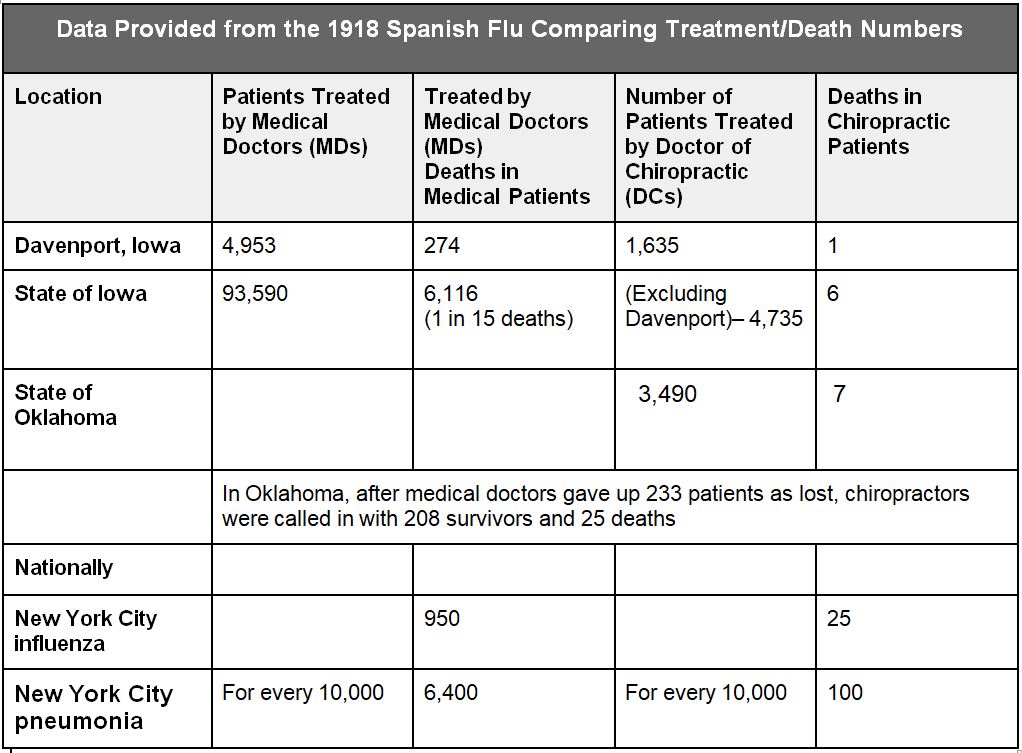 In his introduction to a recent white paper[1] issued by the International Chiropractors Association (ICA), the association’s president, Stephen Welsh, D.C., wrote: “The current global health crisis surrounding the COVID-19 Pandemic has resulted in changes in our everyday lives and has created increased levels of stress, anxiety, and fear. Scientific evidence has validated that long-term exposure to stress negatively affects the immune system.”
In his introduction to a recent white paper[1] issued by the International Chiropractors Association (ICA), the association’s president, Stephen Welsh, D.C., wrote: “The current global health crisis surrounding the COVID-19 Pandemic has resulted in changes in our everyday lives and has created increased levels of stress, anxiety, and fear. Scientific evidence has validated that long-term exposure to stress negatively affects the immune system.”
Hans Selye, widely regarded as the “father of stress research,” defined stress in 1936 as “the non-specific response of the body to any demand for change.” Stated more simply, “stress is the body's reaction to harmful situations -- whether they’re real or perceived.”[2]
Being Injured is Stressful and Stress Decreases Immune Function
Whether you’ve sustained an injury to your spine in an auto accident, or at work, or at home or play, such injuries can be understood as stressful life events.

A study published in the Journal of Sports Rehabilitation in July 2018 observed that with athletes, being injured “can lead to negative emotional responses in terms of anger, anxiety, confusion, and sadness.”[3] Because being injured often impairs your ability to perform tasks and activities you are accustomed to doing naturally and easily, the sudden inability to do such things or not be able to do them without experiencing pain is perceived as a threat to your survival. Thus, the perceptions that accompany the injury create stress.
Because of the link between stress and immunity, stress is a public health issue--even more so during a recognized public health crisis such as the COVID-19 pandemic. Among the recommendations of the Center for Disease Control for coping with stress during the pandemic is taking care of your body.
To take care of your body, you not only need to exercise regularly, eat nutritious foods, and get plenty of sleep, but also properly handle injuries that increase your stress level.
 Chiropractic care, including spinal and/or extremity adjusting in conjunction with therapeutic exercise and massage and other physical therapy modalities, relieves pain and improves function--in effect, helping to address the combined effects of injury as a source of stress.
Chiropractic care, including spinal and/or extremity adjusting in conjunction with therapeutic exercise and massage and other physical therapy modalities, relieves pain and improves function--in effect, helping to address the combined effects of injury as a source of stress.
A compelling reason for handling your injuries through a regimen of chiropractic care before they cause undue stress is that “psychological conditions, such as stress or depression, are known to compromise immune defenses and increase the likelihood of infections.”[4]
Although you might be concerned that receiving chiropractic may increase your risk of exposure to the COVID-19 virus, your chances are minimal if you receive care in a chiropractic clinic that is taking all due precautions to clean and disinfect, and where personnel wear appropriate personal protective equipment. (see Chiropractic Care during COVID-19 Pandemic.)
It’s fair to say that chiropractic can reduce stress associated with injuries to the spine or other parts of the body. But can chiropractic actually help people prevent disease or help them recover from disease by improving the function of the immune system?
Can Chiropractic Care Improve Immune Function?
It would be utterly irresponsible to claim that chiropractic care can cure someone of COVID-19. To date, there are no known cures for COVID-19 in either traditional or alternative medicine (including chiropractic).
Generally speaking, in the world of evidence-based healthcare, there has to be a convincing body of evidence available in peer-reviewed scientific journals to support a claim that a particular treatment is capable of causing a positive clinical outcome.
Despite anecdotes from both patients and doctors of chiropractic claiming that there is a link between chiropractic care and improved immune function, there is no published research in peer reviewed journals to support the assertion that there is a direct, cause-effect relationship between chiropractic care and improved immune function. One reason for this may be that not enough research has been conducted in this area. Most chiropractors work in small clinics. And although chiropractic colleges and universities conduct some research, their budgets are tiny compared to the research budgets of medical schools affiliated with large universities.
Chiropractic and the Relationship Between the Nervous System and the Immune System
We do know this: chiropractic adjustments have an effect on the nervous system, and the nervous system influences the immune system. In 2005, the Journal of Manipulative Therapeutics published a review study on the state of the basic science research related to chiropractic spinal adjusting. The study concluded that both dysfunctional spinal joints and chiropractic adjustments of such joints have an impact on neurological function. The study also concluded that evidence exists to suggest mechanisms by which spinal influences may bring about clinically significant effects on immune function.[5]
Another study published in the journal Evidence-Based Complementary and Alternative Medicine in 2017 suggested that spinal manipulative therapy (SMT) “induces a kind of relaxation similar to that achieved by biofeedback” and that the brain’s response to SMT “may reflect the psychophysiological relaxation that accompanies reduced sympathetic nerve activity.”[6] This is significant, because increased activity of the sympathetic nervous system can have an inhibitory effect on immune function.
The ICA-issued white paper quoted at the beginning of this article summarizes the current state of the research showing the relationship between chiropractic and immune function quite well and makes a case for more formal research in this area.
Chiropractic During the Spanish Flu Pandemic of 1918
The ICA-issued white paper quoted frequently throughout this article also makes two other important points worthy of mention here:
- “A lack of peer reviewed research is not proof of a lack of benefit.”
- “It is important to remember that the first forms of evidence, the precursor to formal research, is observation and anecdotal evidence. The observation that those who use chiropractic regularly and do not become ill with colds, flu, and other community shared illnesses is frequent within the profession and should not be ignored.”
One striking example of anecdotal evidence of the efficacy of chiropractic is an account written by Wayne R. Rhodes, DC in a history of chiropractic in the state of Texas and published by the Texas Chiropractic Association.[7]
“Chiropractors got fantastic results from influenza patients…” Rhodes wrote. Below table shows the results he was referring to.
According to the ICA-issued white paper, the data shown in Table above was not collected as a part of a formal scientific study and subjected to a peer review process but was gathered originally by the American Osteopathic Association and then apparently promoted more broadly out of Davenport Iowa, the home of Palmer College (the nation’s first and oldest chiropractic college) and presented in meetings and also in newspapers.[8] [9]
In summary, there is not enough evidence in peer reviewed scientific journals to assert that Chiropractic can improve immunity or cure anything. However, there is compelling anecdotal information that should serve as the basis for more formal research.
Chiropractic can ease the stress related to injuries of the spine and other parts of the body as well.
[1] Immune Function and Chiropractic: What does the Evidence Provide? Second Edition ( A white paper issued by the International Chiropractic Association, 3/28/2020
[2] https://www.webmd.com/balance/stress-management/stress-symptoms-effects_of-stress-on-the-body#1
[3] Lichtenstein MB, Gudex C, Andersen K, Bojesen AB, Jørgensen U. Do Exercisers With Musculoskeletal Injuries Report Symptoms of Depression and Stress? [published online ahead of print, 2018 Jul 25]. J Sport Rehabil. 2018;1‐6. doi:10.1123/jsr.2017-0103
[4] Wheway J, Mackay CR, Newton RA, et al. A fundamental bimodal role for neuropeptide Y1 receptor in the immune system. J Exp Med. 2005;202(11):152738.
[5] Cramer G, Budgell B, Henderson C, Khalsa P, Pickar J. Basic science research related to chiropractic spinal adjusting: the state of the art and recommendations revisited. J Manipulative Physiol Ther. 2006;29(9):726-61.
[6] Inami A, Ogura T, Watanuki S, et al. Glucose Metabolic Changes in the Brain and Muscles of Patients with Nonspecific Neck Pain Treated by Spinal Manipulation Therapy: A [18F]FDG PET Study. Evid Based Complement Alternat Med. 2017;2017:4345703.
[7] Rhodes WR. The official history of chiropractic in Texas. 1978, Austin: Texas Chiropractic Association. 188 p.
[8] Advertisement, What Chiropractic Really Does, in The News Democrat. 1919: Paducah, KY. p. 5.
[9] McKay HJ. Spanish Influenza, in The Ogden Standard. 1920: Ogden, Utah. p. 9.



